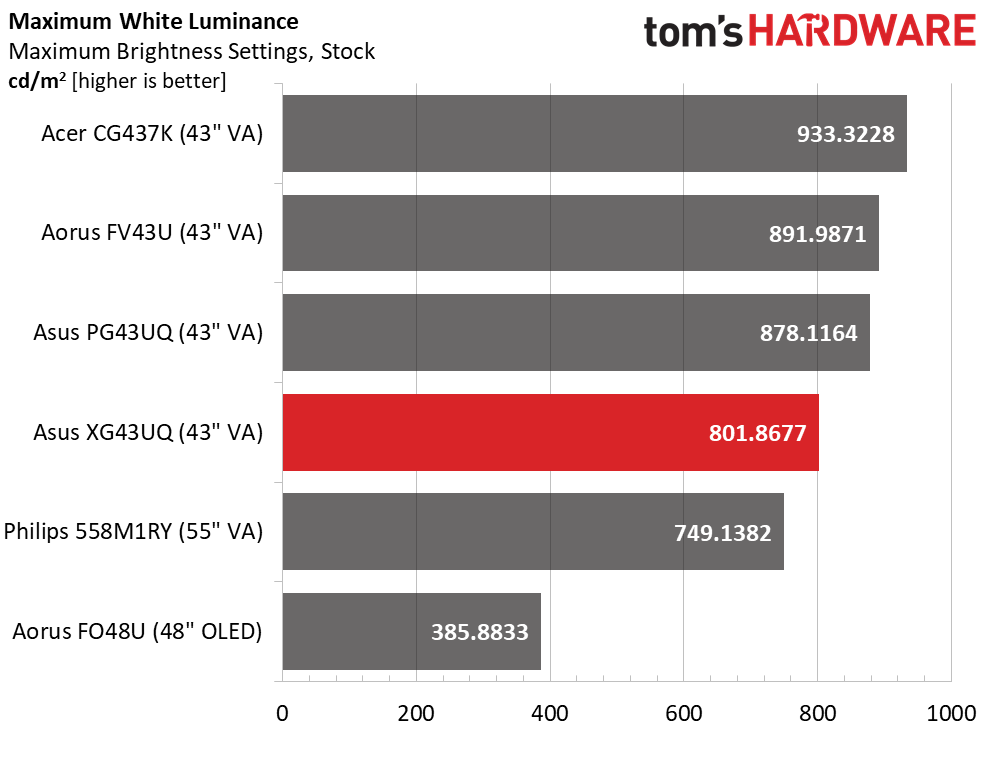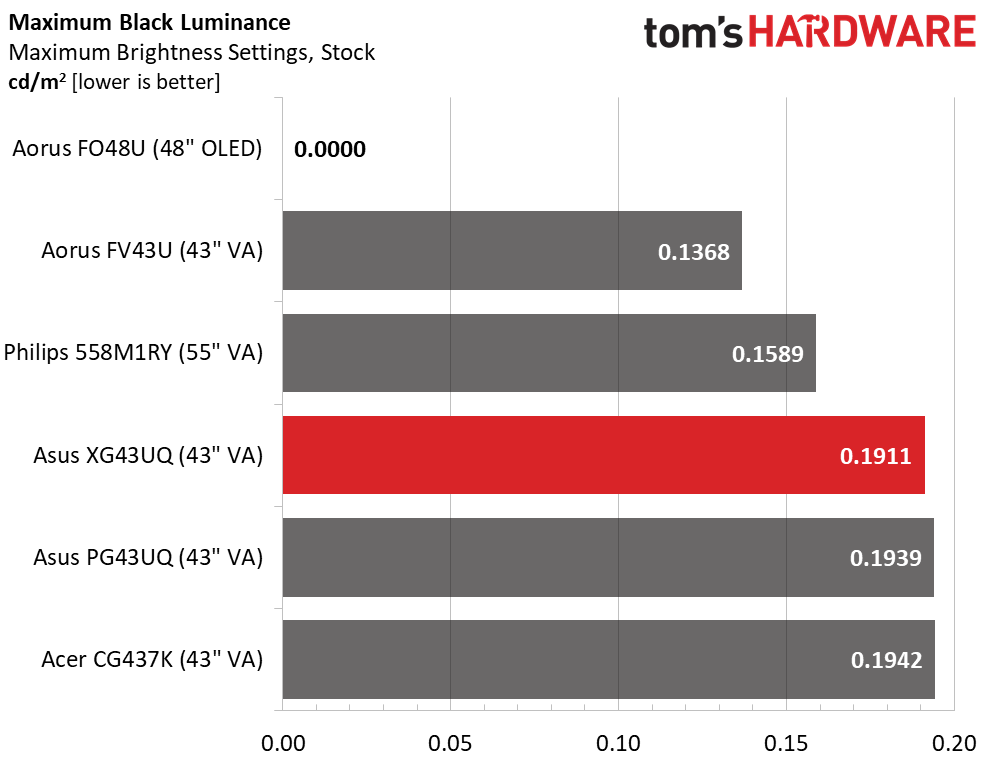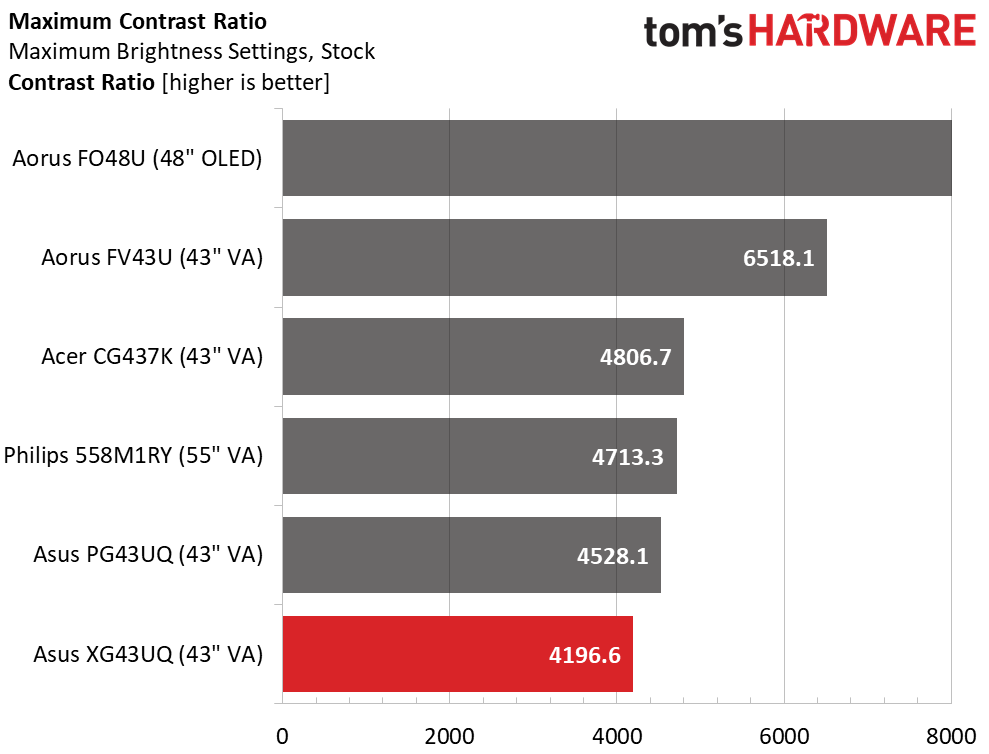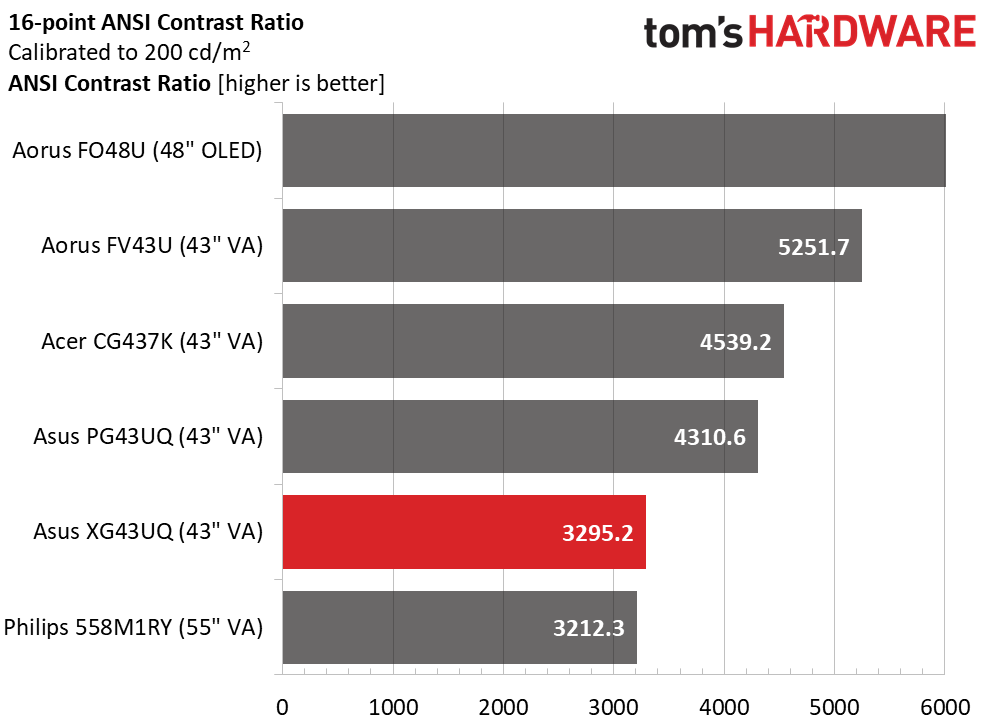Why you can trust Tom's Hardware
To read about our monitor tests in-depth, please check out Display Testing Explained: How We Test PC Monitors. We cover brightness and contrast testing on page two.
Uncalibrated – Maximum Backlight Level



No panel needs this much output in SDR mode but the XG43UQ can crank out over 800 nits if you want it. At this level, the picture is too bright to look at for more than a few minutes. The minimum brightness is 70 nits which is a tad strong for gameplay in the dark. We’d rather see a max SDR level of around 400 nits and a 50-nit minimum. This would allow for finer adjustments and less eye fatigue.
Black levels are VA dark though the Philips and Aorus screens can manage impressively low numbers. Though the XG43UQ takes last place in the contrast test, 4,196.6:1 is an excellent number. The FO48U’s contrast is unmeasurable which is why there is no value for it on the chart. Among the LCDs, the Aorus is the over-achiever at over 6,500:1.
After Calibration to 200 nits



The XG43UQ has a slightly higher black level than the others after calibration which takes contrast down a bit to 3,328.4:1. This is still perfectly respectable since it is triple what one would see from an IPS panel.
The XG43UQ’s ANSI contrast is nearly as high as its static number which indicates good quality control and a properly-fitted grid polarizer. We were also very satisfied with our sample’s image depth in all content both moving and static.
Get Tom's Hardware's best news and in-depth reviews, straight to your inbox.
Current page: Brightness and Contrast
Prev Page Response, Input Lag, Viewing Angles and Uniformity Next Page Grayscale, Gamma and Color
Christian Eberle is a Contributing Editor for Tom's Hardware US. He's a veteran reviewer of A/V equipment, specializing in monitors. Christian began his obsession with tech when he built his first PC in 1991, a 286 running DOS 3.0 at a blazing 12MHz. In 2006, he undertook training from the Imaging Science Foundation in video calibration and testing and thus started a passion for precise imaging that persists to this day. He is also a professional musician with a degree from the New England Conservatory as a classical bassoonist which he used to good effect as a performer with the West Point Army Band from 1987 to 2013. He enjoys watching movies and listening to high-end audio in his custom-built home theater and can be seen riding trails near his home on a race-ready ICE VTX recumbent trike. Christian enjoys the endless summer in Florida where he lives with his wife and Chihuahua and plays with orchestras around the state.
-
Krull37 Hello.Reply
Late Respone I know, but i have a Question. I'm happy with this Monitor. But better Picture why not ?
About your Calibration settings.
I cant change the nits like yours. HDR On or Off and .
What Settings should i use ?
Just Contrast and Color Settings? Was this with HDR ON or OFF? Whats the best Picture. Gaming HDR or Cinema HDR ?
Why is my Picture so dark wenn i turn on HDR its a HDR 1000 Monitor.
Hope for Response please.
Picture ModeRacingBrightness 200 nits21Brightness 120 nits80Brightness 100 nits5Brightness 80 nits2 (min. 70 nits)Contrast78Gamma2.2Color Temp UserRed 89, Green 91, Blue 100 -
Krull37 I did this : Is that ok ? Like i said, cant change 200 nits brightness etc.Reply
Btw, Monitor Brightness is still 65, but i changed Contrast to 78. Should i change brightness too ?
Contrast78Gamma2.2Color Temp UserRed 89, Green 91, Blue 100